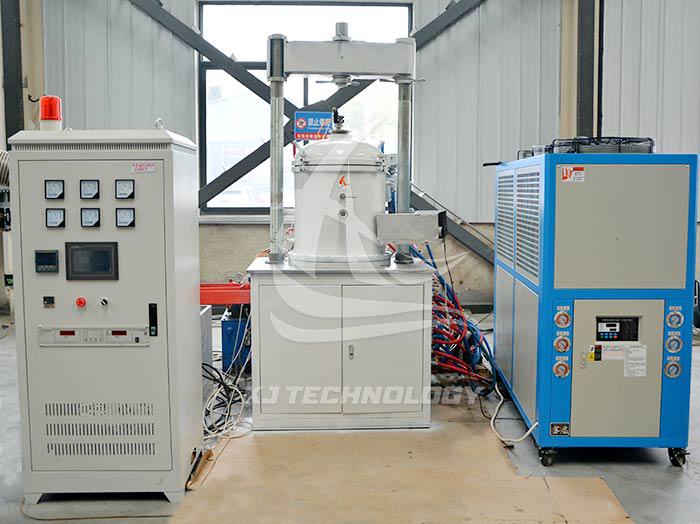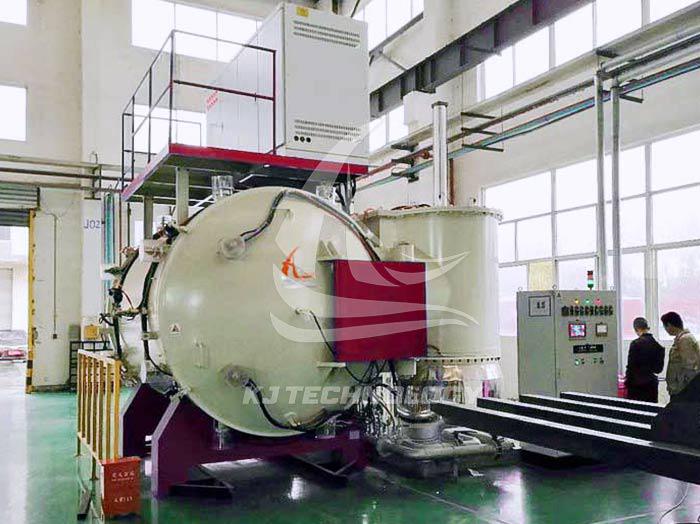How to choose a high-temperature electric heating vacuum brazing furnace?
 04-23-2025 Author: KJ technology
04-23-2025 Author: KJ technology
When choosing a high-temperature electric heating vacuum brazing furnace, the following aspects need to be considered:
1. Technical specifications and performance
Working temperature range: Select the appropriate maximum working temperature based on the melting point of the required brazing material. For example, the working temperature range of some high-temperature vacuum brazing furnaces can reach 1000 ℃, 1315 ℃, 1650 ℃, or even 2200 ℃.
Temperature uniformity: Ensure uniform temperature distribution inside the furnace to ensure brazing quality. Usually, temperature uniformity should be controlled between ± 5 ℃ and ± 10 ℃.
Heating and cooling rates: Rapid heating and cooling rates can improve production efficiency and reduce production cycles. For example, the heating rate of some models of vacuum brazing furnaces can reach room temperature to 300 ℃ ≥ 10 ℃/min, and the high temperature stage is ≥ 20 ℃/min.
Vacuum degree: Select the appropriate vacuum degree according to the requirements of the brazing material. High vacuum degree helps reduce oxidation and pollution, and improve brazing quality. For example, the working vacuum degree of some vacuum brazing furnaces can reach 10-4 Pa, and the ultimate vacuum degree can reach 10-5 Pa.
2. Furnace structure and dimensions
Effective workspace size: Select the appropriate effective workspace size based on the size and quantity of the workpiece to be brazed. For example, some models of vacuum brazing furnaces have an effective temperature equalization zone size ranging from 305x305x305mm to 610x610x1220mm, and can even be customized according to requirements.
Furnace body material: Choose materials that are resistant to high temperatures and corrosion, such as stainless steel, ceramic fibers, etc., to ensure the durability and stability of the furnace body.
Furnace door design: The furnace door should have good sealing and insulation properties to reduce heat loss and atmosphere pollution.
3. Control System and Security
Temperature control system: Choose a vacuum brazing furnace equipped with an advanced temperature control system to achieve precise temperature control and regulation. For example, some vacuum brazing furnaces use PLC control systems and touch screen operation interfaces to facilitate user parameter settings and monitoring.
Safety protection device: Ensure that the vacuum brazing furnace is equipped with comprehensive safety protection devices, such as over temperature protection, leakage protection, overpressure protection, etc., to ensure the safety of the experimental process.
4. After sales service and technical support
After sales service: Choose a supplier that provides good after-sales service to ensure timely resolution of any problems encountered during use.
Technical support: Suppliers should provide necessary technical support and training services to help users better master the usage and maintenance skills of vacuum brazing furnaces.
5. Price and cost-effectiveness
Price: Choose the appropriate vacuum brazing furnace model and configuration based on budget and actual needs.
Cost effectiveness: Taking into account factors such as technical specifications, performance, after-sales service, and price of the vacuum brazing furnace, choose products with high cost-effectiveness.








